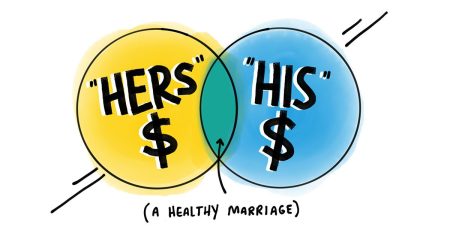Credit Sesame discusses how, despite increasing worry about debt, many consumers still take on more debt rather than address their financial situation.
The latest Survey of Consumer Expectations from the Federal Reserve Bank of New York presents a confounding picture of consumer behavior.
An increasing number of consumers fear they can’t afford the debt they’ve taken on. Yet, collectively, consumers plan to continue to spend beyond their means. This could mean there are a whole lot of people headed for serious debt problems. Instead of ignoring the fear, consumers would be wise to create a financial plan now. Consumers who ignore their fears will likely get deeper into debt the longer they delay.
Survey shows fears of missing payments are growing
The Survey of Consumer Expectations is conducted monthly and covers a wide range of topics that affect consumer finances. It focuses on expectations of upcoming household and general economic conditions. This provides a picture of the information consumers use to make financial decisions.
One thing that’s on the minds of many consumers is the fear that they may miss one or more debt payments soon.
According to the August 2024 survey, consumers believe they have a 13.6% probability of missing a debt payment over the next three months. To put it differently, that equates to nearly one out of every seven consumers.
The August survey marked the third consecutive month that this perceived risk of missing a debt payment has risen. It’s now at the highest level since April of 2020. That was back when pandemic shutdowns had suddenly put millions of Americans out of work. The uncertainty was very understandable back then. However, with the job market still strong and incomes growing faster than inflation, it’s a little harder to understand.
Harder, that is, until you look at how consumers plan to spend their money.
Consumers worry about debt but still plan to overspend
Three figures from the Survey of Consumer Expectations sum up how households are approaching their budgets:
- The median expectation for inflation over the next year is 3.0%
- Consumers expect household income to grow by 3.1% over the next year
- Consumers plan on increasing household spending by 5%
In other words, consumers expect to increase spending by more than the inflation rate and by more than the rise in household incomes. One way to look at this is that they plan to increase household spending more than they need or can afford.
This type of surge in spending is okay on occasion, but not at a time when consumers are already deep in debt. Household debt is already at a record high, and as previously noted, more and more consumers fear they can’t keep up with their payments.
Even for people who don’t have debt, if spending increases faster than income rises, the amount households can save is reduced. The personal saving rate has been low for the past two and a half years, so this does not bode well for the future.
Five steps to turn fear into positive action
It’s no wonder that more and more people fear falling behind on debt payments. However, worrying without doing something about it does not help. That fear needs to prompt positive action. Here are five steps to take if debt is becoming overwhelming:
- Budget. A few things have thrown household spending habits out of whack in recent years: the pandemic, government stimulus checks, and inflation, among them. Now that the pandemic crisis is over and inflation has returned to below-normal levels, this is an excellent time to reset your budget. Unless you create a budget that doesn’t depend on ever-increasing spending, you constantly lose more and more of your wealth to debt.
- Prioritize debt. If you’re juggling multiple debt payments, you must keep up with the minimum requirements on all of them. If you can afford to pay a little extra, put it towards your higher-interest debt first. The more you reduce interest payments, the more your money can go towards paying down the principal you owe.
- Refinance where possible. Once you’ve identified which of your debts has the highest interest rate, see if there’s any way you can refinance it. Credit card debt is a perfect candidate for refinancing because its rates are so high. Personal loans generally have lower rates than credit card debt, which can be a good way to refinance a large credit card balance. Zero-interest balance transfer credit cards are another possibility, as long as you have a realistic plan for paying off the balance before the zero-interest period expires.
- Pay more than just the minimum. When dealing with credit card debt, your goal should always be to pay more than the minimum required amount on each bill. Otherwise, your debt drags on for a long time, and you pay more interest.
- Rebuild your credit score. If you’ve gotten into debt trouble, you may have done some damage to your credit score. This can worsen the problem, as people with lower credit scores generally pay more to borrow money. Figure out what’s dragging your credit score down so you can take steps to rebuild it.
The survey paints a complex picture of consumer behavior. Consumers worry about debt and fear falling behind on debt payments, but many continue to spend beyond their means. This suggests a growing risk of serious debt problems. Facing these fears is the first step toward financial recovery. Consumers would be wise to be proactive by budgeting, prioritizing debt repayment, and seeking refinancing options. Ignoring the warning signs will only lead to deeper financial difficulties. Taking control of spending habits and addressing debt head-on can help steer consumers away from long-term financial instability.
If you enjoyed Consumers worry about debt yet take on more you may like,
Disclaimer: The article and information provided here are for informational purposes only and are not intended as a substitute for professional advice.
Read the full article here










